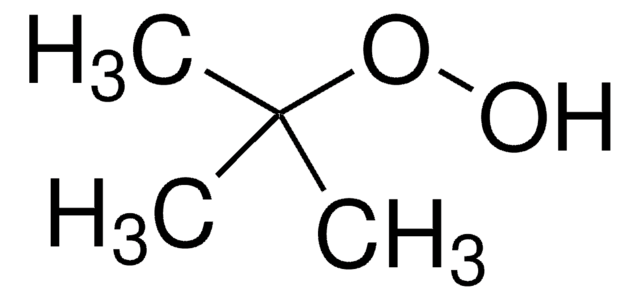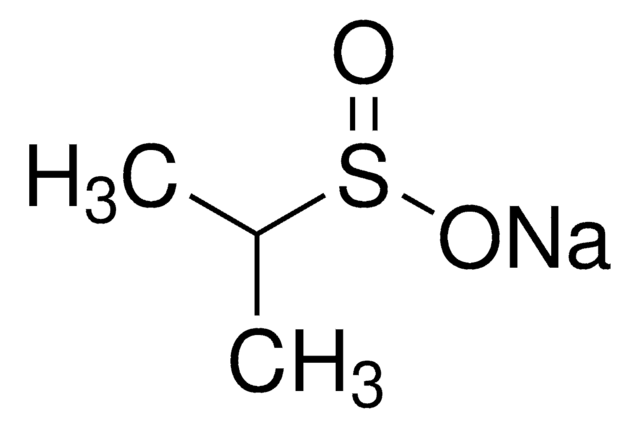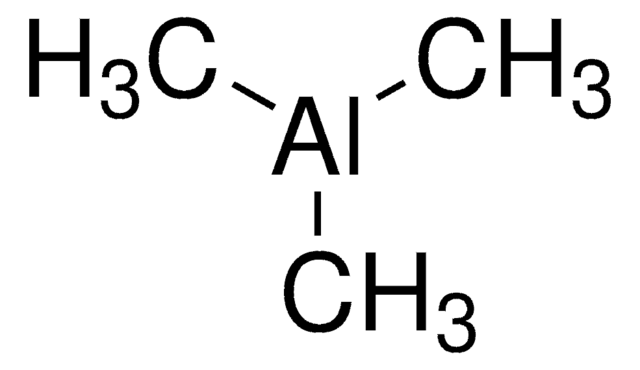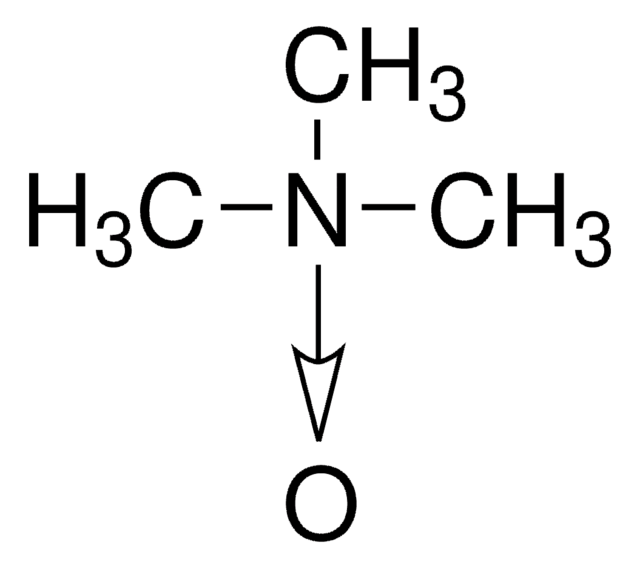Kluczowe dokumenty
745480
Zinc isopropylsulfinate
95%
Synonim(y):
Baran Isopropylation Reagent, Baran IPS Reagent, Bis((isopropylsulfinyl)oxy)zinc, IPS
About This Item
Polecane produkty
Poziom jakości
Próba
95%
Formularz
solid
przydatność reakcji
reaction type: Allylation
reaction type: C-C Bond Formation
reagent type: catalyst
reaction type: C-H Activation
reagent type: diversification reagent
mp
161-166 °C
grupa funkcyjna
sulfinic acid
ciąg SMILES
CC(C)S(=O)O[Zn]OS(=O)C(C)C
InChI
1S/2C3H8O2S.Zn/c2*1-3(2)6(4)5;/h2*3H,1-2H3,(H,4,5);/q;;+2/p-2
Klucz InChI
PEEMMWYYSHSBTQ-UHFFFAOYSA-L
Szukasz podobnych produktów? Odwiedź Przewodnik dotyczący porównywania produktów
Zastosowanie
Practical and Innate Carbon-Hydrogen Functionalization of Heterocycles
Learn More at the Professor and Product Portal of Professor Phil S. Baran.
Powiązanie
Uwaga dotycząca przygotowania
Inne uwagi
Hasło ostrzegawcze
Danger
Zwroty wskazujące rodzaj zagrożenia
Zwroty wskazujące środki ostrożności
Klasyfikacja zagrożeń
Aquatic Acute 1 - Aquatic Chronic 1 - Eye Dam. 1 - Skin Corr. 1B - STOT SE 3
Organy docelowe
Respiratory system
Kod klasy składowania
8A - Combustible corrosive hazardous materials
Klasa zagrożenia wodnego (WGK)
WGK 3
Temperatura zapłonu (°F)
Not applicable
Temperatura zapłonu (°C)
Not applicable
Wybierz jedną z najnowszych wersji:
Masz już ten produkt?
Dokumenty związane z niedawno zakupionymi produktami zostały zamieszczone w Bibliotece dokumentów.
Produkty
The synthesis of heteroaromatic and aromatic compounds is at the heart of the chemical industry. The ever-growing demand for new chemical entities, coupled with dwindling resources and time constraints allotted to any given research project, a rapid way to diversify (hetero)aromatic scaffolds is needed.
Nasz zespół naukowców ma doświadczenie we wszystkich obszarach badań, w tym w naukach przyrodniczych, materiałoznawstwie, syntezie chemicznej, chromatografii, analityce i wielu innych dziedzinach.
Skontaktuj się z zespołem ds. pomocy technicznej










